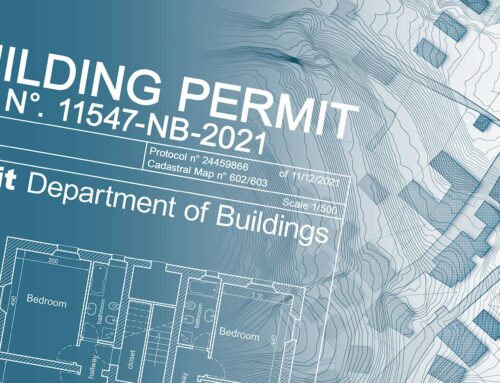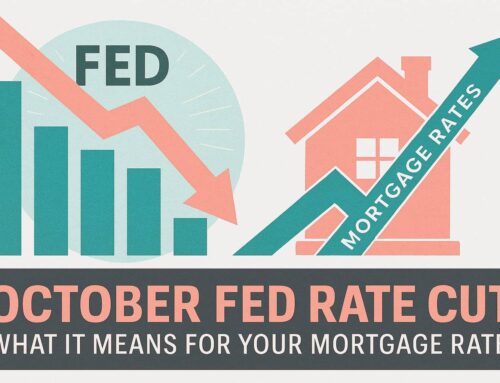
How Mortgage Handcuffs Are Affecting Colorado
Colorado homeowners who secured low mortgage rates of 2-3% during 2020-2021 now face significant financial barriers to moving or refinancing, with current rates around 7-9%. Nearly two thirds of mortgaged homeowners held rates below 4% in early 2022, highlighting the extent of the lock-in effect and its impact on housing market mobility. This “mortgage handcuff” or “golden handcuffs mortgage” effect has frozen market turnover and reduced housing inventory across the state. While the situation creates challenges for buyers and sellers alike, creative financing solutions such as assumable mortgages and rate buydowns offer potential paths forward in today’s complex market environment.
Key Takeaways
- Colorado homeowners with sub-4% mortgages are reluctant to sell, leading to reduced housing inventory and market stagnation.
- Monthly payment differences of $1,200+ discourage Colorado residents from moving, even when their living situations change.
- The housing market slowdown affects Colorado’s economic mobility as homeowners stay put to retain low mortgage rates.
- Creative financing solutions like assumable mortgages are gaining popularity among Colorado buyers facing high current rates.
- Colorado’s housing market sees fewer transactions as homeowners with 2-3% rates avoid upgrading or downsizing at 7-9% rates.
Are You Locked In? The Reality of Mortgage Handcuffs
When homeowners find themselves with mortgage rates considerably lower than current market rates, they face a challenging financial dilemma known as the golden handcuffs mortgage. This situation occurs when the gap between their existing low-rate mortgage and current market rates becomes so significant that moving or refinancing becomes financially prohibitive, causing many homeowners to feel stuck in their current homes despite changing needs.
The impact is particularly evident in Colorado’s housing market, where many homeowners who secured rates around 2-3% during the pandemic now face the prospect of 7-9% rates if they were to purchase a new home. This stark difference in monthly payments creates a powerful incentive to stay put, with many homeowners putting off selling their homes due to the significant increase in rates, even when life circumstances might otherwise prompt a move. The result is a market characterized by reduced inventory as homeowners carefully weigh the substantial financial implications of giving up their advantageous rates.
From 2% to 7%: The Historical Significance of 2020-2021 Interest Rates
The pandemic era of 2020-2021 marked an unprecedented period in mortgage rate history, with interest rates plunging to record lows near 2%. During this time, many Colorado homeowners refinanced their mortgages to rates below 4%, seizing the opportunity to secure historically low rates.
Today’s stark contrast, with rates hovering around 7%, illustrates the dramatic shift in the lending environment. Statistical data reveals that 55.2% of homeowners currently hold mortgages below 4%, while 21.3% secured rates below 3% during the pandemic period. This disparity between past and present rates has created a challenging dynamic where homeowners must weigh the financial implications of trading their advantageous rates for current market conditions, fundamentally altering the traditional patterns of housing mobility in Colorado.
Stuck in Place: How Low-Rate Mortgages Are Freezing the Housing Market
As historically low golden mortgage rates continue to bind homeowners to their properties, Colorado’s housing market faces unprecedented stagnation. The stark contrast between pandemic-era rates around 2-3% and current rates above 6% has created a powerful disincentive for homeowners to sell, effectively freezing the market’s natural turnover. This lock-in effect is not unique to Colorado—many Americans are similarly affected, with the phenomenon impacting housing markets nationwide.
This lock-in effect has rippled through the housing ecosystem, greatly reducing available inventory and creating barriers to mobility. Many homeowners who secured mortgages during the pandemic’s ultra-low rates now find themselves mathematically constrained from moving, even when life circumstances might otherwise prompt relocation. As a result, many Americans are waiting to move or renovate, anticipating more favorable market conditions before making major decisions. The financial impact is substantial – a homeowner with a $500,000 mortgage would see their monthly payment increase by over $1,200 if they moved and secured a new loan at current rates.
Breaking Free: Creative Financing Solutions in a High-Rate Environment
Facing the reality of mortgage handcuffs, savvy homeowners and buyers are exploring innovative financing alternatives to navigate today’s high-rate environment. Three key strategies have emerged as viable solutions: assumable mortgages, seller financing, and rate buydowns.
Assumable mortgages allow qualified buyers to take over a seller’s existing low-rate mortgage, preserving the favorable terms while facilitating property transfer. Seller financing permits property owners to act as the lender, potentially offering more competitive rates than traditional mortgages. Rate buydowns, where either party contributes to temporarily or permanently reduce the interest rate, can make monthly payments more manageable for buyers.
These creative financing approaches provide pathways for both buyers and sellers to overcome the constraints of mortgage handcuffs while maintaining market participation. Investors are increasingly drawn to these solutions as they seek new investment opportunities and ways to maximize returns in a high-rate environment. Additionally, some homeowners are considering renting out their properties instead of selling, turning their homes into an investment that generates rental income and long-term financial growth.
What’s Next? Market Predictions and Potential Policy Solutions for the Rate Lock Crisis
Economists have highlighted the significant impact of the lock-in effect on the housing market, noting how elevated mortgage rates discourage homeowners from selling and contribute to reduced market activity. Their expert analysis suggests that these dynamics, along with broader market trends, are shaping both current conditions and expectations for the future.
Market experts increasingly point to several potential pathways out of the current rate lock crisis, with both private sector innovations and public policy interventions taking shape. A rising trend toward adjustable-rate mortgages offers homeowners flexibility to shift during this period of heightened rates, while innovative bridge loan products help buyers overcome the timing challenges of simultaneous transactions. Existing home sales, a key indicator of market activity, have seen notable declines as a result of the rate lock effect and limited housing inventory.
On the policy front, discussions are emerging about potential government programs to incentivize mobility in the housing market. These could include temporary rate buydown programs, tax credits for first-time homebuyers, and initiatives to expand housing supply. Industry analysts suggest that as more homeowners accept the reality of higher rates, combined with these emerging solutions, the market may gradually return to more typical transaction volumes, though the timeline remains uncertain. However, given the complexity of current market dynamics and the evolving nature of policy interventions, future results remain difficult to predict.
FAQ
Conclusion
Colorado’s mortgage handcuff phenomenon requires innovative solutions to release market mobility. While historically low rates continue to keep homeowners in place, alternative financing strategies like assumable mortgages and bridge loans offer potential pathways forward. As the market adapts, policy makers and industry leaders must collaborate to develop sustainable solutions that balance homeowner interests with market liquidity, ensuring Colorado’s housing market remains dynamic and accessible.








